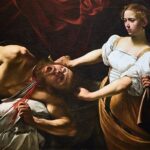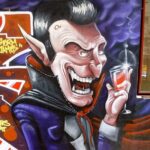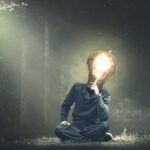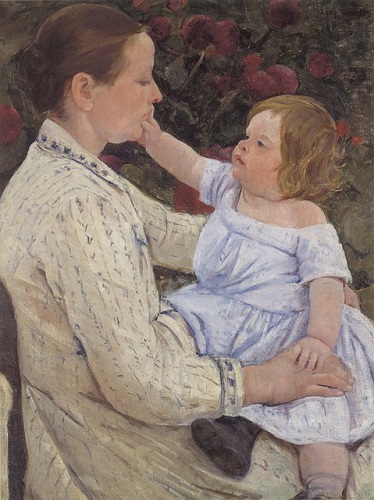
Throughout most of its history, Western society has been structured as a patriarchal system that is almost exclusively dominated by men. This power system, which has been obviously oppressive toward women, allowed very few female artists the same tolerance and prominence compared to their male counterparts; in fact, even those rare few women who did obtain some degree of individual esteem were still heavily restricted by the general masculine culture, religious beliefs, social conventions and law.
As a result, many of those renowned female artists had a similar artistic propensity solely to a narrow-range spectrum of familiar ideas and themes available to them – for example, motherhood, parenting, the household and the important male figures in their lives. This essay will discuss and compare two important historical female artists who expressed their inner world in similar themes, although they came from two different art fields, two different centuries, two different cultures and even had two different family statuses – Anne Bradstreet and Mary Cassatt.
Anne Bradstreet was an English-American poet who immigrated to America from England in the 17th century and lived most of her adult life in Massachusetts. She was married to a well-known politician in the new American colonies and had eight children (one passed away in infancy). Mary Cassatt was an American Impressionist painter born in Pennsylvania in the 19th century and lived most of her adult life in Europe, chiefly in Paris. She was never married nor had any children. Seemingly, there are not many, if at all, striking resemblances between Bradstreet the poet and Cassatt the painter; however, they were yet both attracted to similar topics in their respective art fields.
Motherhood
Perhaps the most conspicuous themes for which both artists were highly famous are motherhood and the relations between a mother and her children. In her poem “In Reference to Her Children,” Bradstreet lovingly portrays each one of her eight children and their unique attributes. In “Before the Birth of One of Her Children,” Bradstreet narrates a pregnant woman before childbirth who envisages her death as a result, which was a sad probable possibility for mothers during that period. In “The Author to Her Book,” Bradstreet describes the art of writing and publishing as a metaphor for a mother and her child. In “A Dialogue between Old England and New,” Bradstreet again uses the metaphor of a mother (Old England) and her child (New England) to illustrate how she perceives the religious tension between Catholics and Protestants.
Equivalently, Cassatt also exhibits a similar interest in the subject of motherhood in her paintings. In her series of Mother and Child, Cassatt depicts the deep connection between a mother and her child from various angles and situations. In Feeding the Ducks, Cassatt displays the motherly warmth of two women to a child as they feed ducks from a small boat. In Young Mother Sewing, Cassatt shows a daughter comfortably reclining on her mother’s lap while she is sewing. In Mother and Sara Admiring the Baby, Cassatt depicts a warm relationship between a mother, her daughter and a new sibling. Thus, in the works of both Bradstreet and Cassatt, there is a strong presence of motherhood, inevitably felt by readers/observers in spite of the two artists’ different positions in life.
Men
Bradstreet and Cassatt lived in two distant worlds, Bradstreet in the new American colonies and Cassatt in Europe, yet, they were still subjected to similar patriarchal systems; therefore, it is not surprising that many of their works revolve around the strong men in their lives. Bradstreet dedicates two poems to her beloved husband: “A Letter to Her Husband, Absent upon Public Employment,” in which she likens him to the sun that brings warmth to her, and “To My Dear and Loving Husband,” in which she expresses her unparalleled love toward him and their inseparable unity. In “To Her Father with Some Verses,” Bradstreet attempts to articulate her gratitude towards her father for her life. In “The Four Ages of Man,” Bradstreet portrays the stages of aging of men – Childhood, Youth, Middle Age and Old Age.
As opposed to the married Bradstreet, Cassatt never married, and therefore, some of her paintings focus on other men in her life rather than a husband: her father and brother. Cassatt portrays her father reverentially from his back as he rides a horse in Mr. Robert S. Cassatt on Horseback and depicts her brother handsomely in three paintings: Portrait of Alexander J. Cassatt, Portrait of Alexander J. Cassatt II and Portrait of Alexander J. Cassat and His Son Robert Kelso Cassatt. It is also worth mentioning that Cassatt painted a mysterious unknown masculine bullfighter who certainly holds a lot of male bravado in Toreador and Torero and Young Girl. Hence, Bradstreet and Cassatt also had a similar artistic proclivity for manly figures meaningful to them.
Women Artists
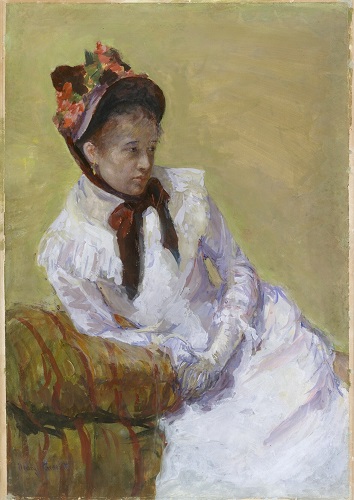
Another theme that occupied the two women artists is women artists. In “The Prologue,” Bradstreet contemplates and very humbly expresses her thoughts about herself as a woman poet in a masculine world. In “The Author to Her Book,” which was mentioned before, Bradstreet describes her own relationship with her works as a female artist from a distinct and obvious maternal point of view, a style that clearly cannot be conveyed by male artists.
Cassatt was also interested in depicting women artists, but interestingly, her focus was female musicians. In The Banjo Lesson, A Musical Party, Girl with a Banjo and The Mandolin Player, Cassatt painted women in the center of the works who are engaged in creating music, whereas there are no male musicians whatsoever in any of her paintings. Since Bradstreet and Cassatt were both irregular female figures in almost exclusive male clubs, it is quite understandable why they chose to highlight, each one in her own unique way, female artists at the heart of the composition in several of their works.
Breaking Boundaries
In spite of the oppressing masculine sphere in which they resided, Bradstreet and Cassatt did attempt to break out of the limited boundaries of women with their art. Bradstreet wrote an incredibly feminist poem about the late Queen Elizabeth called “In Honour of that High and Mighty Princess, Queen Elizabeth,” in which she glorifies and praises the Queen. Bradstreet goes even further as she compares the Queen to eminent masculine leaders and extols her military victories – an especially male-oriented domain.
Quite differently, Cassatt as well tried to stretch her own personal borders and branch out into unfamiliar territories with a theme associated traditionally only with bold male artists – nudity – in Reclining Nude. Thus, the two artists expanded their art respectively into terrains mostly foreign to female artists and women in general and far from the familiarity of their domestic masculine habitat, even if just slightly, and opened the door for other women artists in the future.
As illustrated, the poet Anne Bradstreet and the painter Mary Cassatt display some very similar ideas and themes in their works, such as motherhood, women artists and specific dominant male figures, albeit they lived two entirely dissimilar lives in terms of historical, geographical, cultural and personal contexts. This can be explained by the patriarchal systems to which both artists were subjected; oppressive systems that pushed them toward the same turfs both artists could relate to, no matter how different their life circumstances had been.
In spite of all their hardships of being women in a men’s world, Bradstreet and Cassatt did manage to pave the way for more female artists down the road. They proved that an artistic judgmental distinction based solely on gender is completely invalid and that women can be just as extraordinarily brilliant artists as men, and even much better, regardless of the kind of genitalia they possess.
